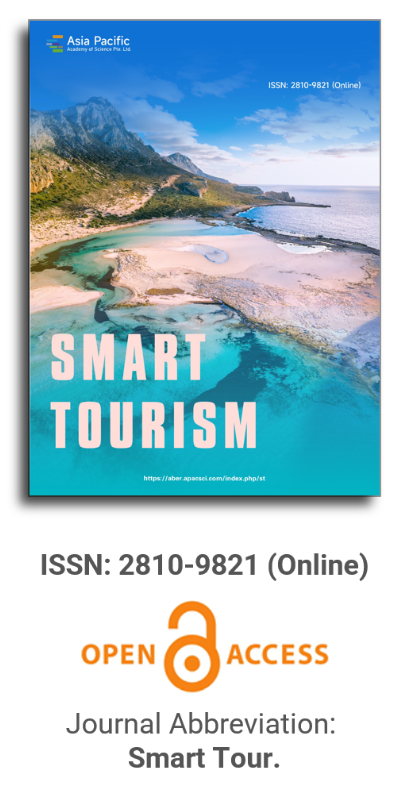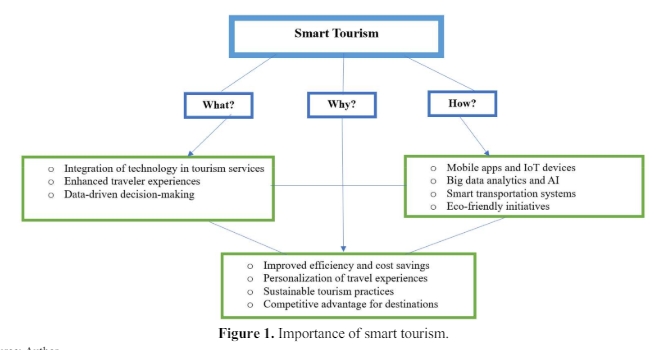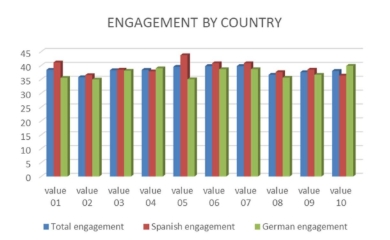


Incorporating perceived responsibility on tourism sustainability in tourist typology through the knowledge gap theory
Vol 4, Issue 1, 2023
Download PDF
Abstract
This study investigates the application of knowledge gap theory in the context of tourism sustainability, examining the perceptions that varying types of tourists have about their own responsibilities to tourism sustainability, with regard to preferences on tourism information and travel modes. This study aims to develop a typology of tourists based on perceived self-responsibility towards tourism sustainability. A mixed-methods approach was employed, starting with the focus group followed by a survey. Data were gathered from three cities, resulting in 864 valid samples for the final analysis. The findings suggested that although most samples endorsed tourism sustainability indicators, obvious disparity was found in perceived self-responsibility across sample groups, particularly among those with a preference for digital information. Four distinct tourist types were identified based on their perceived self-responsibility on tourism sustainability. The results offer crucial insights for policymakers and industry stakeholders in fostering sustainable tourism practices for target tourist segments. By identifying and bridging knowledge gaps and customizing strategies to cater to various tourist demographics, a more responsible and sustainable approach to tourism can be cultivated.
Keywords
References
- Tichenor PJ, Donohue GA, Olien CN. Mass Media Flow and Differential Growth in Knowledge. Public Opinion Quarterly 1970; 34(2): 159. doi: 10.1086/267786
- Munar AM, Gyimóthy S, Cai L. Tourism social media: a new research agenda. In: Tourism Social Media: Transformations in Identity, Community and Culture. Emerald Group Publishing, Cheltenham; 2013. pp. 1–15.
- Seeler S, Schänzel H, Lück M. Sustainable travel through experienced tourists’ desire for eudaemonia and immersion. Scandinavian Journal of Hospitality and Tourism 2021; 21(5): 494–513. doi: 10.1080/15022250.2021.1974541
- Temizkan R, Yucesoy S. Tourist Typology. In: Buhalis D (editor). Encyclopedia of Tourism Management and Marketing. Edward Elgar Publishing, Cheltenham; 2022. pp. 534–537. doi: 10.4337/9781800377486
- Budeanu A. Sustainable tourist behaviour-a discussion of opportunities for change. International Journal of Consumer Studies 2007; 31(5): 499–508. doi: 10.1111/j.1470-6431.2007.00606.x
- Kim DY, Hwang YH, Fesenmaier DR. Modeling tourism advertising effectiveness. Journal of Travel Research 2005; 44(1): 42–49. doi: 10.1177/0047287505276590
- McFee A, Mayrhofer T, Baràtovà A, et al. The effects of virtual reality on destination image formation. In: Information and Communication Technologies in Tourism 2019, Proceedings of the International Conference; 30 January– 1 February 2019; Nicosia, Cyprus. Springer International Publishing; 2019. pp. 107–119.
- Neuhofer B, Buhalis D, Ladkin A. Experiences, co-creation and technology: A conceptual approach to enhance tourism experiences. Tourism and Global Change: On the Edge of Something Big 2013; 546–555.
- Tussyadiah IP. Factors of satisfaction and intention to use peer-to-peer accommodation. International Journal of Hospitality Management 2016; 55: 70–80.
- Miller G, Rathouse K, Scarles C, et al. Public understanding of sustainable tourism. Annals of Tourism Research 2010; 37(3): 627-645. doi: 10.1016/j.annals.2009.12.002
- Steckenreuter A, Wolf ID. How to use persuasive communication to encourage visitors to pay park user fees. Tourism Management 2013; 37: 58–70. doi: 10.1016/j.tourman.2013.01.010
- Hanks L, Line N, Kim WGW. The impact of the social services cape, density, and restaurant type on perceptions of interpersonal service quality. International Journal of Hospitality Management 2017; 61: 35–44.
- Lee S, Oh H. Effective communication strategies for hotel guests’ green behavior. Cornell Hospitality Quarterly 2013; 55(1): 52–63. doi: 10.1177/1938965513504029
- Tölkes C. Sustainability communication in tourism – A literature review. Tourism Management Perspectives 2018; 27: 10-21. doi: 10.1016/j.tmp.2018.04.002
- Cohen SA, Higham JES. Eyes wide shut? UK consumer perceptions on aviation climate impacts and travel decisions to New Zealand. Current Issues in Tourism 2011; 14(4): 323–335. doi: 10.1080/13683501003653387
- Gössling S. Tourism, tourist learning and sustainability: An exploratory discussion of complexities, problems and opportunities. Journal of Sustainable Tourism 2017; 26(2): 292–306. doi: 10.1080/09669582.2017.1349772
- Harris KJ, Hanks L, Line ND, et al. Understanding responses to posted restaurant food safety scores: An information processing and regulatory focus perspective. International Journal of Hospitality Management 2017; 60: 67–76. doi: 10.1016/j.ijhm.2016.09.002
- Bandura A. The explanatory and predictive scope of self-efficacy theory. Journal of Social and Clinical Psychology 1986; 4(3): 359–373. doi: 10.1521/jscp.1986.4.3.359
- Bramwell B, Lane B. Critical research on the governance of tourism and sustainability. Journal of Sustainable Tourism 2011; 19(4-5): 411–421.
- McKercher B. Towards a classification of cultural tourists. International Journal of Tourism Research 2002; 4(1): 29–38. doi: 10.1002/jtr.346
- Nguyen THH, Cheung C. The classification of heritage tourists: a case of Hue City, Vietnam. Journal of Heritage Tourism 2013; 9(1): 35–50. doi: 10.1080/1743873x.2013.818677
- Cohen E. Toward a sociology of international tourism. Social Research 1972; 164-182.
- Plog S. Why destination areas rise and fall in popularity: An update of a Cornell Quarterly classic. Cornell Hotel and Restaurant Administration Quarterly 2001; 42(3): 13–24.
- Cruz-Milan O. Chapter 3: Plog’s Model of Personality-Based Psychographic Traits in Tourism: A Review of Empirical Research. In: Camilleri M (editor). Tourism Planning and Destination Marketing. Emerald Publishing, Bingley; 2018. pp. 49–74. doi: 10.1108/978-1-78756-291-220181003
- Pearce PL. The Social Psychology of Tourist Behaviour: International Series in Experimental Social Psychology. Elsevier; 2013.
- Crompton JL. An assessment of the image of Mexico as a vacation destination and the influence of geographical location upon that image. Journal of Travel Research 1979; 17(4): 18–23. doi: 10.1177/004728757901700404
- Snepenger D, King J, Marshall E, et al. Modeling Iso-Ahola’s motivation theory in the tourism context. Journal of Travel Research 2006; 45(2): 140–149. doi: 10.1177/0047287506291592
- Wang Y, Pizam A. Tourism Destination Marketing and Management: Collaborative Strategies. Cabi; 2011.
- Pearce PL, Moscardo G. Visitor evaluation. Evaluation Review 1985; 9(3): 281-306. doi: 10.1177/0193841x8500900303
- Pearce PL. Fundamentals of tourist motivation. In: Witt S, Moutinho L (editors). Tourism Marketing and Management Handbook. Prentice Hall, Hoboken; 1993. pp. 46-68.
- Mapingure C, du Plessis E. Tourist taxonomies of international tourists visiting Zimbabwe using an extended international tourist role scale. Journal of Hospitality & Tourism Research 2021; 46(2): 344–369. doi: 10.1177/1096348021996786
- Law R, Qi S, Buhalis D. Progress in tourism management: A review of website evaluation in tourism research. Tourism Management 2010; 31(3): 297–313. doi: 10.1016/j.tourman.2009.11.007
- Xiang Z, Du Q, Ma Y, et al. A comparative analysis of major online review platforms: Implications for social media analytics in hospitality and tourism. Tourism Management 2017; 58: 51–65. doi: 10.1016/j.tourman.2016.10.001
- Yildirim O. The effect of social media on business performance: a case study of a Turkish travel agency. In: Gursoy D, Singh Kaurav RP (editors). Handbook on Tourism and Social Media. Edward Elgar Publishing, Cheltenham; 2022. pp. 452–463
- Mayzlin D, Dover Y, Chevalier J. Promotional reviews: an empirical investigation of online review manipulation. American Economic Review. 2014; 104(8): 2421–2455. doi: 10.1257/aer.104.8.2421
- Spohr D. Fake news and ideological polarization. Business Information Review. 2017; 34(3): 150–160. doi: 10.1177/0266382117722446
- Dwyer L, Edwards D, Mistilis N, et al. Destination and enterprise management for a tourism future. Tourism Management 2009; 30(1): 63–74. doi: 10.1016/j.tourman.2008.04.002
- Juan Y, Choi Y, An S, et al. The constraints of Chinese tourists to visit Korea caused by THAAD using Q-methodology. Asia Pacific Journal of Tourism Research 2017; 22(12): 1261–1273. doi: 10.1080/10941665.2017.1391306
- Tasci ADA, Gartner WC. Destination Image and Its Functional Relationships. Journal of Travel Research 2007; 45(4): 413–425. doi: 10.1177/0047287507299569
- Dedeoğlu BB, Balıkçıoğlu S, Küçükergin KG. The role of touristsʼ value perceptions in behavioral intentions: the moderating effect of gender. Journal of Travel & Tourism Marketing 2015; 33(4): 513–534. doi: 10.1080/10548408.2015.1064062
- UNWTO. Global Report on Sustainable Tourism: 2015 Edition. Available online: https://www.e-unwto.org/doi/pdf/10.18111/9789284416899 (accessed on 15 June 2023).
- Rasoolimanesh SM, Ramakrishna S, Hall CM, et al. A systematic scoping review of sustainable tourism indicators in relation to the sustainable development goals. Journal of Sustainable Tourism 2020; 31(7): 1497–1517. doi: 10.1080/09669582.2020.1775621
- UNWTO. Measuring the Sustainability of Tourism. Available online: https://webunwto.s3.eu-west-1.amazonaws.com/s3fs-public/2020-06/MST-Brochure.pdf (accessed on 15 June 2023).
- Caruana R, Glozer S, Crane A, et al. Tourists’ accounts of responsible tourism. Annals of Tourism Research 2014; 46: 115–129. doi: 10.1016/j.annals.2014.03.006
- Porras-Bueno N, Plaza-Mejía MDLÁ, Vargas-Sánchez A. Quality of life and perception of the effects of tourism: A contingent approach. In: Campón-Cerro AM, Hernández-Mogollón JM, Folgado-Fernández JA (editors). Best Practices in Hospitality and Tourism Marketing and Management: A Quality of Life Perspective. Springer, Berlin; 2019; 109–132.
- Ristić D, Vukoičić D, Milinčić M. Tourism and sustainable development of rural settlements in protected areas - Example NP Кopaonik (Serbia). Land Use Policy 2019; 89: 104231. doi: 10.1016/j.landusepol.2019.104231
- Ballantyne R, Packer J, Hughes K. Tourists’ support for conservation messages and sustainable management practices in wildlife tourism experiences. Tourism Management 2009; 30(5): 658–664.
- Cheema A, Papatla P. Relative importance of online versus offline information for Internet purchases: Product category and Internet experience effects. Journal of Business Research 2010; 63(9–10): 979–985. doi: 10.1016/j.jbusres.2009.01.021
- Le Heron J, Sligo F. Acquisition of simple and complex knowledge; a knowledge gap perspective. Journal of Educational Technology & Society 2005; 8(2): 190–202.
- Apuke OD, Omar B. Social media affordances and information abundance: Enabling fake news sharing during the COVID-19 health crisis. Health Informatics Journal 2021; 27(3): 146045822110214. doi: 10.1177/14604582211021470
- Bondielli A, Marcelloni F. A survey on fake news and rumour detection techniques. Information Sciences 2019; 497: 38–55. doi: 10.1016/j.ins.2019.05.035
- Miller ZD, Freimund W, Metcalf EC, et al. Merging elaboration and the theory of planned behavior to understand bear spray behavior of day hikers in Yellowstone National Park. Environmental Management 2019; 63(3): 366–378. doi: 10.1007/s00267-019-01139-w
- Thompson B. Exploratory and confirmatory factor analysis: Understanding concepts and applications. American Psychological Association 2004; 10694(000): 3.
Supporting Agencies
This work was supported by the Fundo de Ensino Superior of Macao SAR Government, Specialized Subsidy Scheme for Macao Higher Education Institutions in the Area of Research in Humanities and Social Sciences [HSS-IFTM-2021-01].
Copyright (c) 2023 Cindia Ching Chi Lam, Ying Zhao, Eliza Si Kei Leong
License URL: https://creativecommons.org/licenses/by/4.0/

This site is licensed under a Creative Commons Attribution 4.0 International License (CC BY 4.0).

Prof. Hung-Che Wu
Nanfang College, Guangzhou
China
Indexing & Archiving
Asia Pacific Academy of Science Pte. Ltd. (APACSCI) specializes in international journal publishing. APACSCI adopts the open access publishing model and provides an important communication bridge for academic groups whose interest fields include engineering, technology, medicine, computer, mathematics, agriculture and forestry, and environment.



.jpg)
.jpg)

.jpg)

